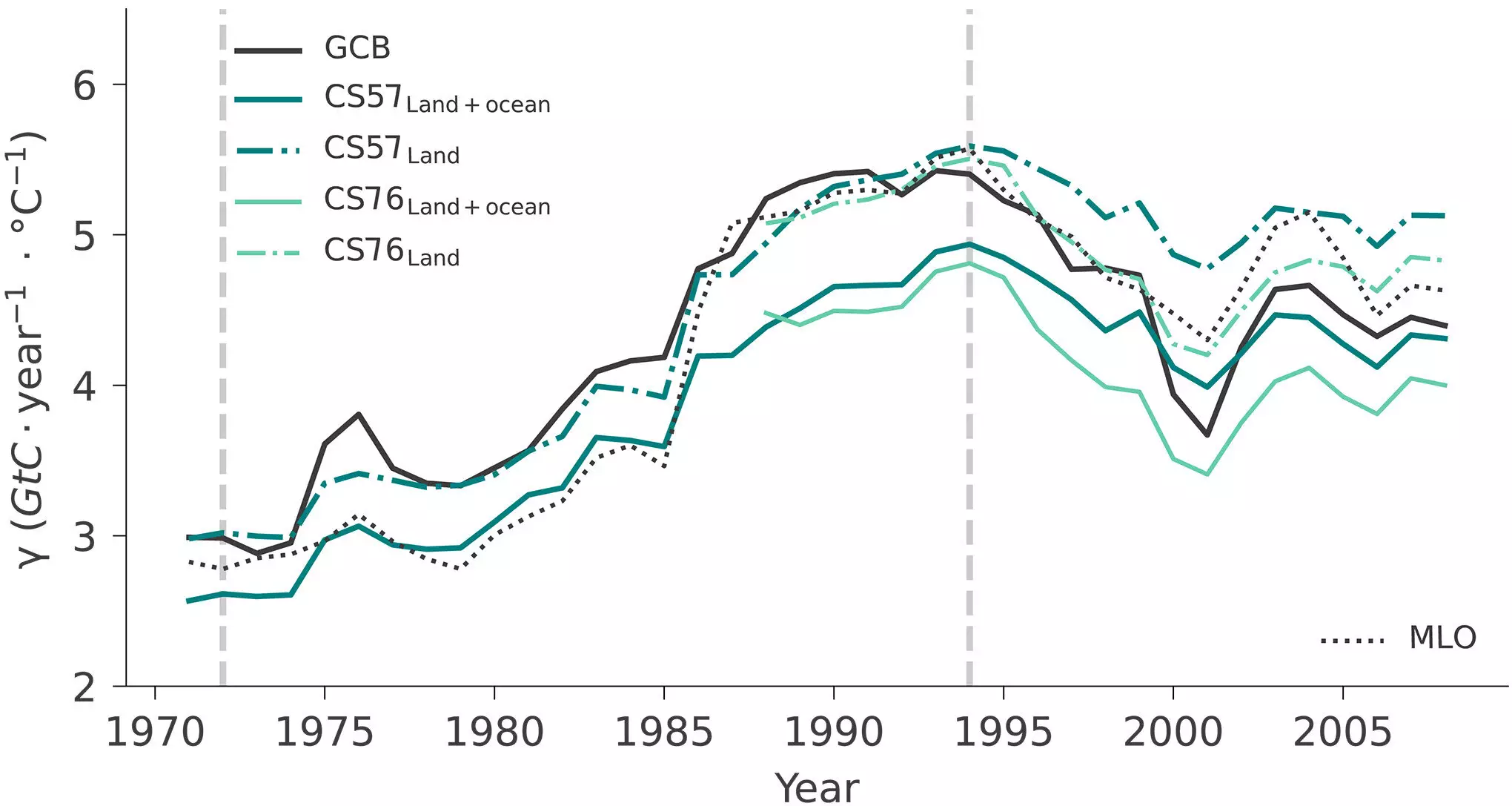In the realm of climate science, the relationship between atmospheric carbon dioxide (CO₂) levels and tropical temperatures has long been a focal point of study. A recent investigation led by researchers from the Max Planck Institute for Biogeochemistry and Leipzig University throws a curveball at our understanding of this connection. The study, published in the journal *Science Advances*, scrutinizes and reinterprets the historical response of CO₂ levels to temperature variations in the tropics from 1959 to 2011.
The prevailing narrative posited that rising CO₂ levels in the atmosphere were reflective of increasing drought conditions and alterations in the carbon cycle due to climate change. However, the new analysis reveals that elusive and extreme climatic events—specifically, the El Niño phenomena—might be pivotal drivers of these shifts, marking a notable deviation from previously entrenched beliefs.
El Niño events, characterized by periodic fluctuations in ocean temperatures, are notorious for inducing severe weather changes, particularly in tropical regions. The recent findings indicate that the sensitivity of atmospheric CO₂ content to tropical temperatures doubled during the 1980s and 1990s when compared to the preceding two decades. What stands out is that this heightened sensitivity correlates strongly with the increased frequency and intensity of El Niño episodes during that time. This detail suggests that the significant fluctuations in global carbon storage and CO₂ levels can be attributed not merely to gradual climate change but rather to these episodic, yet severe, climatic events.
The extreme El Niños of 1982/83 and 1997/98 serve as textbook examples of how droughts and heat waves disrupt plant growth and carbon uptake processes. Under the duress of these climatic events, vegetation is not only less effective at sequestering carbon but might also contribute to atmospheric CO₂ levels by releasing stored carbon. The findings underscore a crucial insight: these discharges of carbon under extreme conditions could lead to rapid increases in atmospheric CO₂, providing a different perspective on the carbon cycle’s functionality and responses to climate perturbations.
The research team elucidates the concept of “slow-in, fast-out” dynamics within the carbon cycle. Essentially, while ecosystems exhibit a gradual capacity to absorb carbon, their ability to release it can be swift and substantial, particularly in the wake of extreme weather events. This mechanism highlights the nuanced behavior of carbon in our environment and calls into question previous assumptions regarding the systemic responses of carbon cycles to sustained climate change.
Na Li, the study’s first author, posits that the implications of this research extend far beyond mere observations; they challenge the notion that the observed sensitivity in CO₂ growth rates signals an irreversible alteration of the carbon cycle. Instead, they present it as a manifestation of internal climate variability, rather than a long-term destabilization induced by climate change.
Implications for Climate Projections
This study highlights a critical re-evaluation of the uncertainties surrounding future climate projections. Historically, it was assumed that the increased sensitivity of CO₂ levels to tropical temperatures indicated a permanent change in the global climate system. However, the recent findings reveal that these fluctuations could be transient responses to extreme phenomena, highlighting the need for more refined climate models.
Dr. Sebastian Sippel emphasizes the necessity of understanding how extreme climate events, particularly El Niño occurrences, influence carbon dynamics. Such comprehension is essential for enhancing the reliability of climate forecasts and crafting targeted mitigation strategies. If future climate models can incorporate these recent insights, there is potential to reduce the uncertainties that currently cloud climate predictions.
In light of the newly uncovered complexities surrounding the tropical carbon cycle and its relationship with atmospheric CO₂, it becomes evident that climate science is an evolving field. The evidence presented by researchers from the Max Planck Institute and Leipzig University encourages a shift in how scientists view the interplay between temperature, carbon dynamics, and extreme weather events. As the scientific community contemplates these results, it points toward a more nuanced and accurate understanding of climate mechanisms that underpin our planet’s future. As we confront the challenges posed by climate change, these insights are invaluable in guiding future research and policy decisions.


Leave a Reply